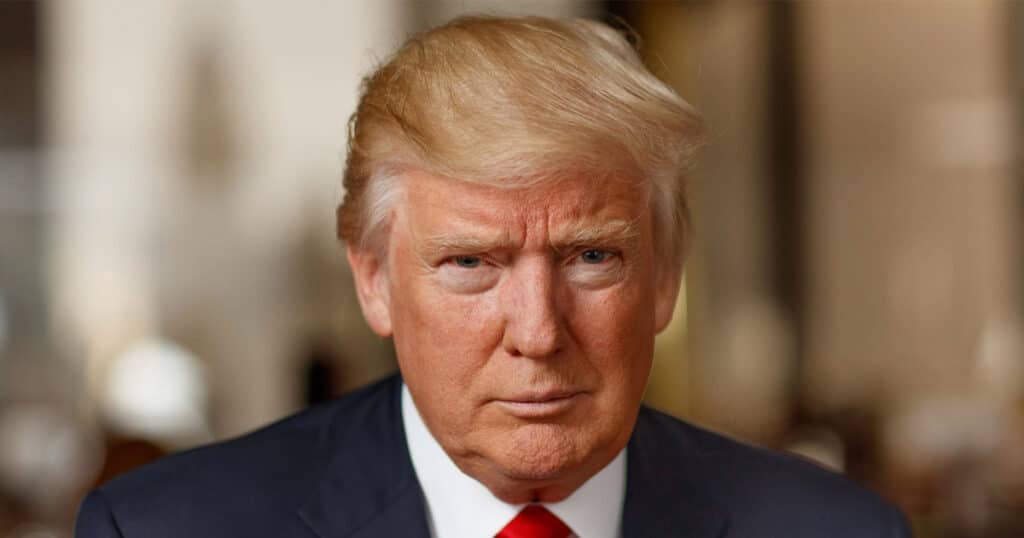
How Trump Changed Conservatism
Donald Trump put things at the center of conservative politics.
Since the 1950s, conservative intellectuals have championed individual liberty, limited government, and free markets as integral to the American way of life. Libertarians defended liberty from the encroachment of the state. Traditionalists urged a return to Judeo-Christian beliefs and Western values. Neoconservatives argued against the expansion of Communist ideologies. And, later, fusionists sought to combine these currents into a single ideology.
Together, conservative thinkers and politicians sought to pay a “common respect to the legacy of their civilization,” in the words of Russell Kirk, an intellectual godfather to the conservative movement. But by the time Trump made his arrival in Republican politics, this idea had become more important as fodder for speeches and editorials than as a springboard to action in the physical world.
On July 4, 2020, facing a cultural revolution that would transform our country by destroying its monuments, Trump stood before Mount Rushmore and declared: “This monument will never be desecrated, these heroes will never be defaced, their legacy will never, ever be destroyed, their achievements will never be forgotten, and Mount Rushmore will stand forever as an eternal tribute to our forefathers and to our freedom.”
It was a watershed moment in the history of American conservatism, where ideas had always been the center of politics. Trump said the radicals of 2020 wanted not just to tear down statues and memorials, but to “tear down the beliefs, the culture, and identity that have made America.” At a moment of crisis, Trump planted himself at the foot of America’s most powerful monument and equated the destruction of our property to the dissolution of our country.
Trump has always been different. Other presidents came from careers in law or politics but Trump was a builder—he made a fortune in the business of things. Once, he put up an enormous American flag at his California golf club overlooking the Pacific Ocean. Critics said the flag was too big. He defended that flag, then put up another one at his Mar-a-Lago estate in Palm Beach, Florida.
Trump launched his first campaign on the promise to build a big, beautiful wall along the border with Mexico. Of course, the conservative intelligentsia laughed at him. Conservative pundit Jonah Goldberg argued the wall was merely a “symbol” of border policy rather than the real thing. Goldberg and so many other conservative intellectuals still believed solutions came in the form of ideas, not things.
But a conservatism of ideas could only last so long against domestic opponents who were committed to transforming the physical world. By the mid-20th century, the political Right was in full retreat from most fields of creative endeavor. The cultural Left was cementing its position in the creative worlds of journalism, cinema, popular music, literature, visual art, drama, and architecture.
While conservatives argued about the abstract purposes of education, revolutionaries in the schools created new curricula, new standards, and new guidelines for discipline. Free market economists debated monetary policy while the institutional Left found ways to transfer federal money to their activists and allies.
By the time Obama secured his second term as president, the Democratic party (and the shadow groups that swim in its wake) had won the day on virtually every issue that mattered. This victory was largely due to their focus on doing and creating things rather than thinking about them. Conservatives still held ground in the public debates over policy – but that was exactly where the Left wanted them. They were confined to the abstract space of deliberation, while the alliances on the Left maintained a free hand to remake the physical space of our nation and our world.
In the process, Democratic supremacy changed the way Americans lived. Citizens had to find new ways to navigate a country that bore increasingly little resemblance to the one they had known only decades prior.
Trump’s first campaign was initially greeted with sneers and jeers from across the spectrum of respectable politics. The news media gave him as much airtime as possible in the hopes that they could sabotage the Republican nomination process so as to give an easy win to Hillary Clinton. Meanwhile, most conservative intellectuals either dismissed Trump out of hand or voiced skepticism about whether he was a Republican in any meaningful sense. Indeed, the Republican party of 2015 had been so long alienated from the world of things that Trump’s brand of conservatism was unrecognizable. After all, Trump was not an “idea man” a la “conservatives” like Jonah Goldberg, David Brooks, William F. Buckley, or Milton Friedman.
But Trump understood something they didn’t: Ideas are worthless if you no longer live in a world where they can be realized.
Democrats owned the world of things and the real-world effects of their policies – however incoherent – were evident to all. An underlying premise of the Trump campaign was a return to things. To infrastructure. To clean streets and safe cities. To American-made products. And to historic landmarks and monuments that memorialize America’s greatness for future generations. Trump recognized that conservative ideas are meaningless until we rebuild the material conditions where they can be achieved.
Taken in aggregate, this insight defines Trump’s decade at the center of American culture. His legacy won’t be just one idea or decision—it will be how he changed the way Americans think, work, govern, and build.
American conservatism will never be the same.
John J. Waters is a lawyer. He served as a deputy assistant secretary of Homeland Security from 2020-21. Follow him at @JohnJWaters1 on X. Adam Ellwanger is a professor at University of Houston – Downtown, where he teaches rhetoric and writing. Follow him at @1HereticalTruth on X.
This article was originally published by RealClearHistory and made available via RealClearWire.



